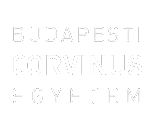Petőcz, Richard (2022) Can unsupervised learning enhance pairs trading strategies? = Tud-e a felügyelet nélküli tanulás javítani a pairs trading stratégiákon? TDK dolgozat, BCE, Financial markets. Szabadon elérhető változat / Unrestricted version: http://publikaciok.lib.uni-corvinus.hu/publikus/tdk/petocz_r_2022.pdf
|
PDF
- Requires a PDF viewer such as GSview, Xpdf or Adobe Acrobat Reader
715kB |
Szabadon elérhető változat: http://publikaciok.lib.uni-corvinus.hu/publikus/tdk/petocz_r_2022.pdf
Absztrakt (kivonat)
Pairs trading is a market-neutral trading strategy which removes the need of fundamental analysis of equities by creating mean reverting pairs with only statistical methods, whose future movements can be predicted, given that their properties stay the same in the out of sample period. In the first half of this study, I examine in the Japanese stock market from Jan 2010 to Dec 2020 which statistical test for cointegration works the best, and which formation and trading period combination and threshold for the trading rules create the best returns and Sharpe ratios. As a result, the Johansen test with a VAR model used to select lags proves to be the best statistical test, outperforming the Engle-Granger test, and the most commonly used 12 months formation and 6 months trading period with a 2 standard deviation threshold-based trading model is the best performing one. In the second half, I compare the standard industry breakdown for preselecting stocks with unsupervised learning, where the statistical factors are determined by principal component analysis and these are clustered into groups by OPTICS density-based algorithm. A low number of principal components and low minimum sample size for OPTICS proves to be the best parameters for clustering, having a 5.09% annual excess return compared to 3.32% of the industry based breakdown, but thanks to the lower number of pairs the volatility is higher as well, 10.41% for PCA and 6.12% for industry breakdown, which is turn results in a lower Sharpe ratio, 0.49 to 0.54. The higher return of the PCA cluster could not be repeated in the US stock market, which indicates that the results found are not consistent, and might only have a higher return in the Japanese stock market thanks to overfitting, which is reinforced by the fact that there is a very low number of pairs selected, 8.3 on average for the trading periods. After including transaction costs, the returns are diminished to 0.43% annual excess return for industry breakdown and 2.14% for PCA, while Sharpe ratios are 0.07 and 0.20.
| Tétel típus: | TDK dolgozat |
|---|---|
| További információ: | 2. díj |
| Témakör: | Pénzügy |
| Azonosító kód: | 15468 |
| Képzés/szak: | Finance and Accounting |
| Elhelyezés dátuma: | 27 Ápr 2023 13:11 |
| Utolsó változtatás: | 27 Ápr 2023 13:11 |
Csak a repozitórium munkatársainak: tétel módosító lap

